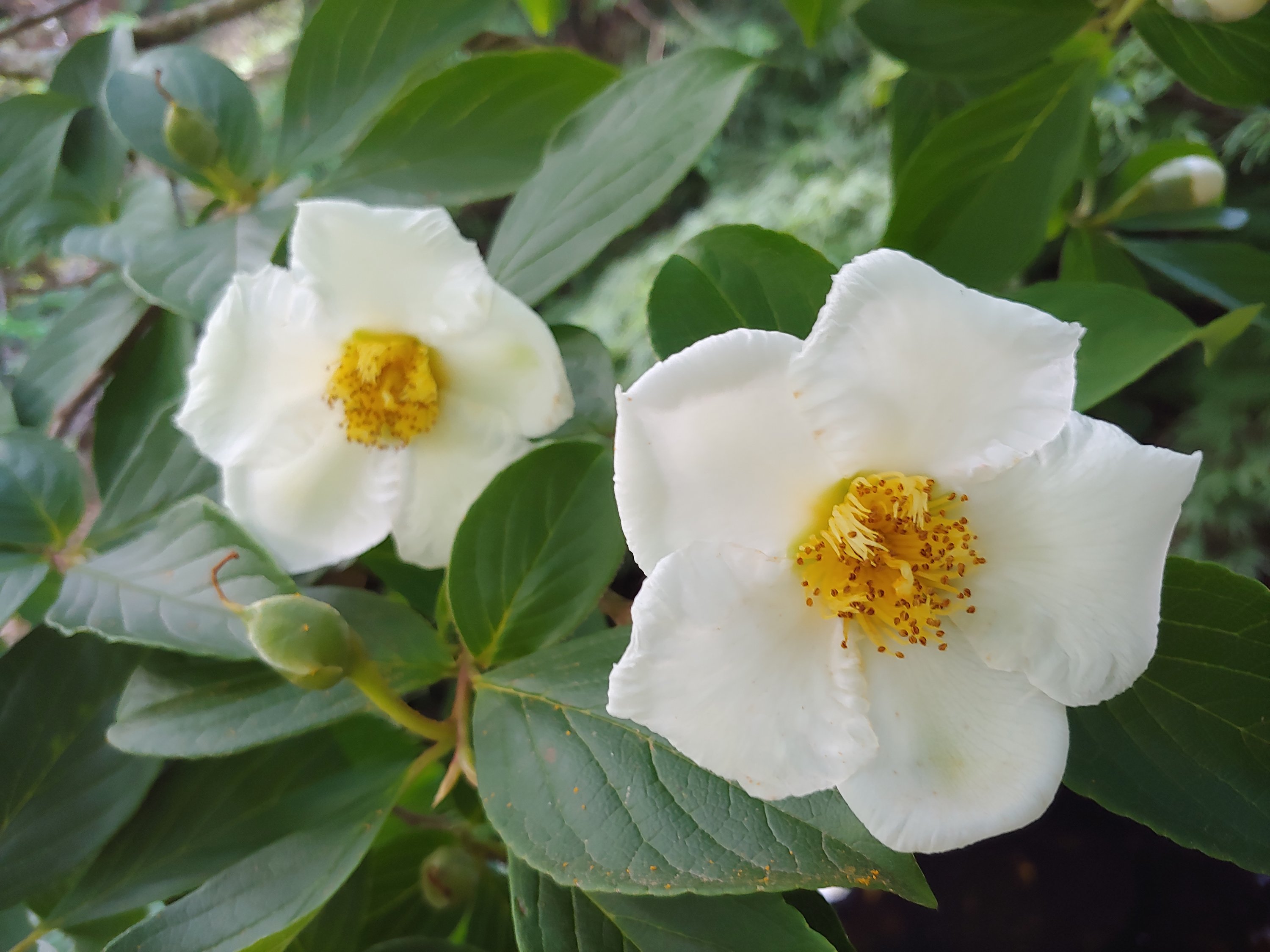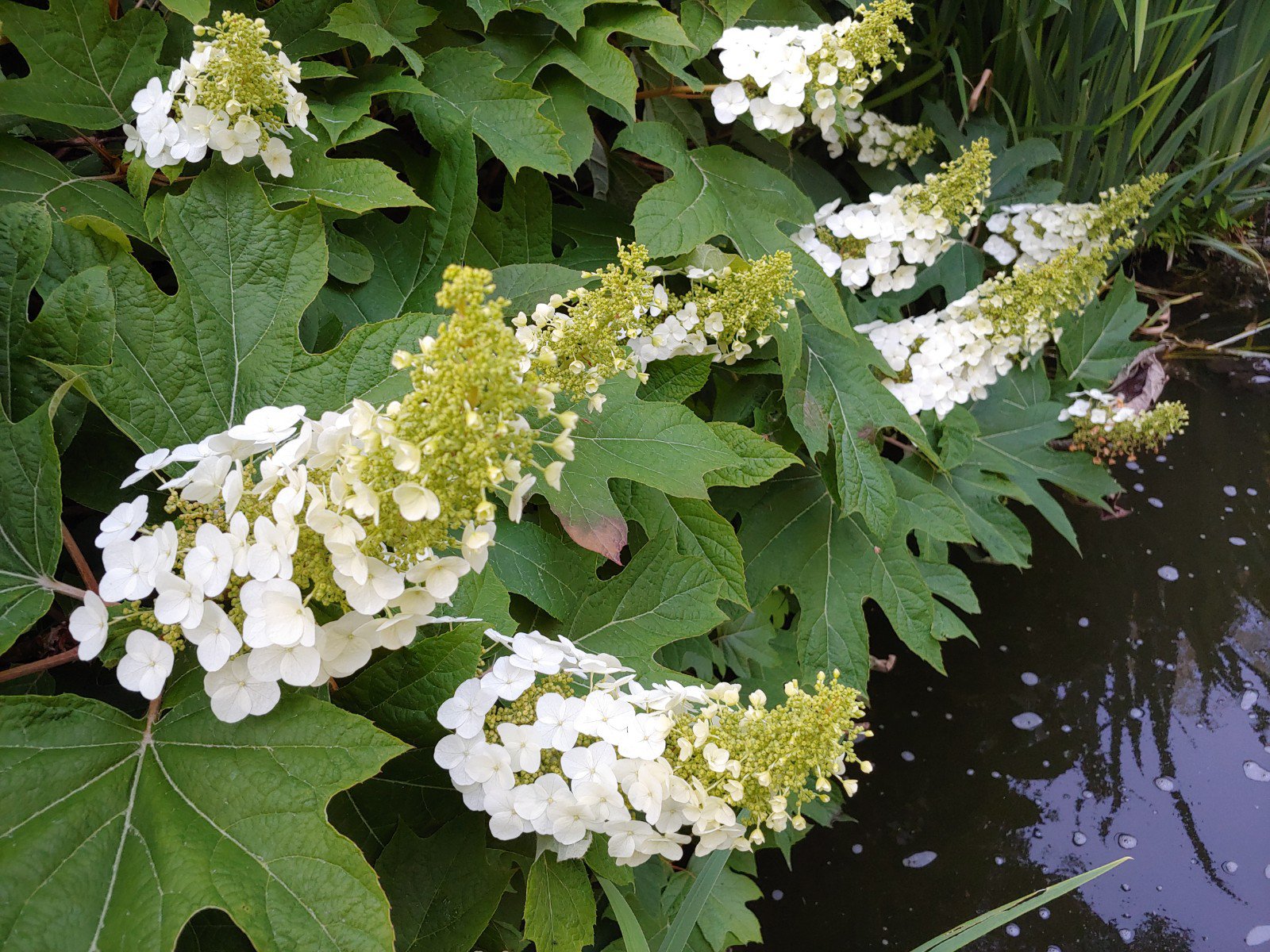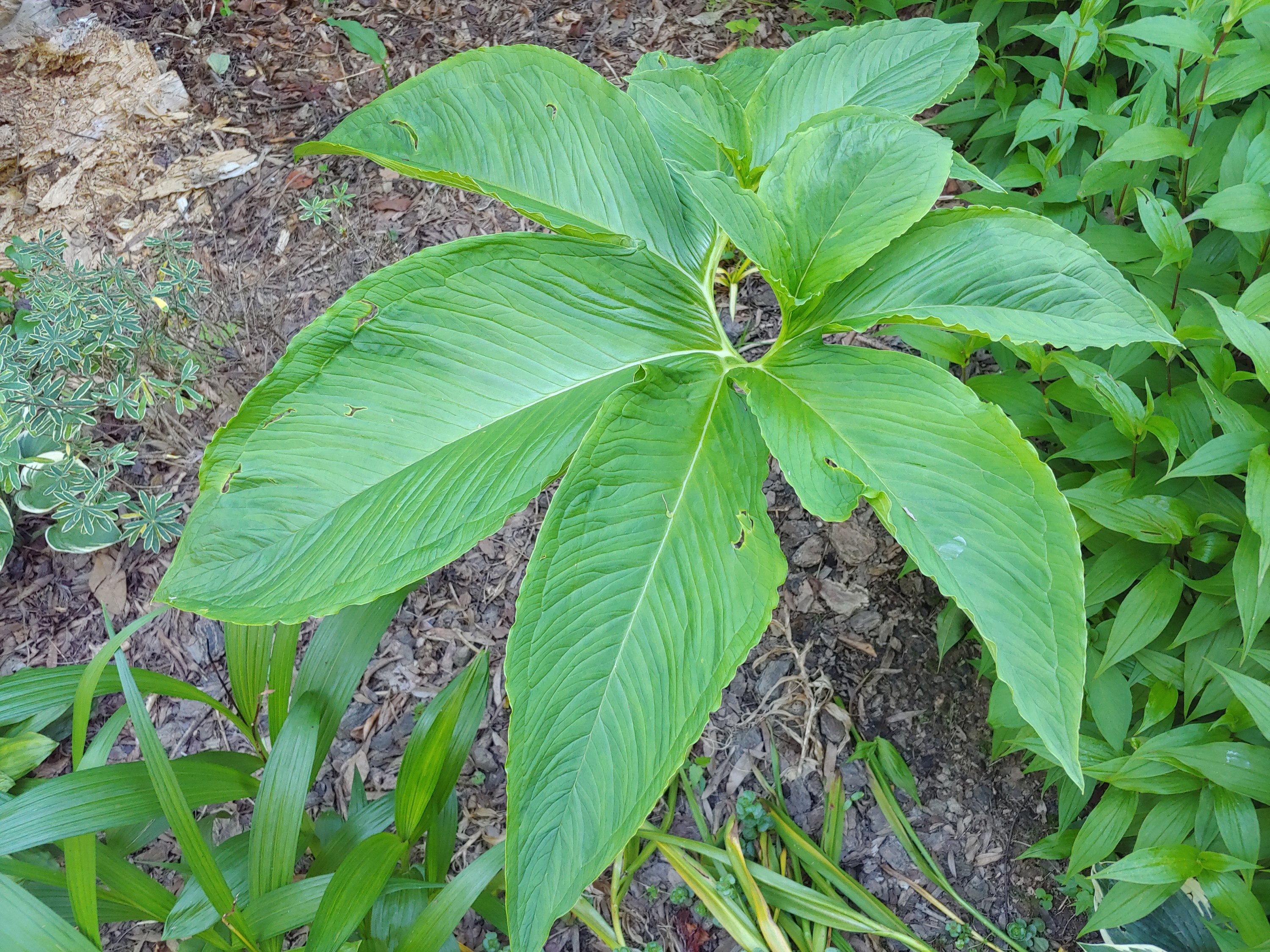There is some slight disadvantage to planting abundant quantities of trees in a space that should more properly contain half the number. Flowers of the Bigleaf magnolia (Magnolia macrophylla) are barely seen as lower branches have been shaded, and the green and white variegated leaf Chinese dogwood ‘Samaritan’ (Cornus kousa ‘Samaritan’) flowers sparsely, too shaded by a tree lilac (Syringa reticulata ‘Ivory Silk’) and an equally tall stewartia (Stewartia pseudocamellia, below).

Flowering of the stewartia is not reduced by shading, not even on lower branches that are shaded by a wide spreading Fernleaf Japanese maple (Acer japonicum ‘Aconitifolium’), though the full view of the tree in flower is obstructed. The flowers of stewartia (and eight weeks later, Gordlinia) are camellia-like, and abundant, with the added benefit that branches that extend into sunlight flower two weeks earlier than ones that are shaded. Blooms fall to the ground intact, which is slightly interesting until the flowers darken and create a bit of a mess on stone pathways.

Again this year, there are mixed results with mophead and lacecap hydrangeas (Hydrangea macrophylla). Stem dieback following recent winters seems guaranteed on most mopheads, except ‘Dear Dolores’, perhaps sheltered by proximity to the house, and the purple flowered ‘Bloomstruck’ (above) that is planted in the worst circumstance (perpetually damp soil) but muddles through with excellent foliage and flowers.

Oakleaf (H. quercifolia, above) and panicled (H. paniculata) hydrangeas do not suffer this winter injury, and again the oakleafs have thrived with increased rainfall this spring. Leaves are half again larger than usual, and flowering has been exceptional. And again, branches must be pruned or smaller neighbors will be lost beneath the wide spreading, large leafed canopy.

Finally, all three Voodoo lilies (Amorphophallus konjac, above) have been located, with growth ranging from full leaf to barely breaking ground. Flowers were short lived just after planting and I forgot where all were planted, which is not unusual, and particularly for a plant that disappears for much of the spring. One is in conflict with a very vigorous clump of toad lily (Tricyrtis), but I believe the two will work it out without my intervention.
Have you lost any shrubs to voles? During the past 2 months, 5 oak leaf hydrangeas (Snow Queen) have keeled over, revealing gnawed off roots. The same with a native azalea and s Chinese evergreen dogwood. All in varying heights from 7 to 5 feet. So disheartening. Do you have any remedies you would care to share?
I have had no problems with voles, I suspect in some part because I mulch very sparingly, or not at all. In loose material, such as mulch, voles move freely, and damage is usually done just below the top of the mulch. If this is the case, the probable remedy is to remove all or most mulch from near the trunk or base of trees and shrubs. I’ve lost a number of trees and shrubs in the last year, but voles would drown in these areas. Instead, the problem has been excess moisture and even standing water for prolonged periods in the lower third of the rear garden. I agree, it is disheartening to lose long established trees and shrubs.
Thank you for your prompt response. Much appreciated! Yes, I finally removed all my leaf litter. And was horrified to see the soil just pockmarked with thousands of holes. I had created the perfect habitat. I was planning to top dress with pine bark mulch. It sounds as though this may not be a good idea, in your opinion or might it be OK if I kept maybe a foot away from the trunks?
When I mulch, which is only in new planting areas, and only once when planting is first done, I use pine chunk mulch because it is slow to decay. By the time the chunks break down, plants have filled the area and mulching isn’t needed again. In a part of the garden, there is a cover of leaves, but here there are so many surface roots from native maples and tulip poplars that voles would need tiny chainsaws to get through.
I expect that a very thin layer of pine chunk mulch could be used, even close to the base of trees and shrubs, or bare soil.
Thank you so much!
Is this Stewartia flowering early (or are mine really late in flowering; I remember my korean stewartia flowering last year in July)?
And do you do anything to prevent stem die-back for the hydrangeas?
Early to mid June is the typical flowering time for this stewartia. I see too few in other gardens to know if this is early or late. I do nothing to prevent stem dieback in hydrangeas. I’m sure I could surround them with leaf covered baskets like a few other tender shrubs, but they’re too big and that seems like a lot of effort. Almost all of mine are remontant, rebloomers, so all still flower, just a few weeks later as they develop buds on new wood.
Also, diseases and some insects proliferate in crowded conditions. My colleague in the Los Angeles region contends with terrible aphid infestation, but will not thin out his garden. We got terrible thrip on rhododendron because they had not been groomed in decades, but are hoping for less thrip damage now that they are getting thinned and cleaned. Crowded roses get serious rust and mildew.